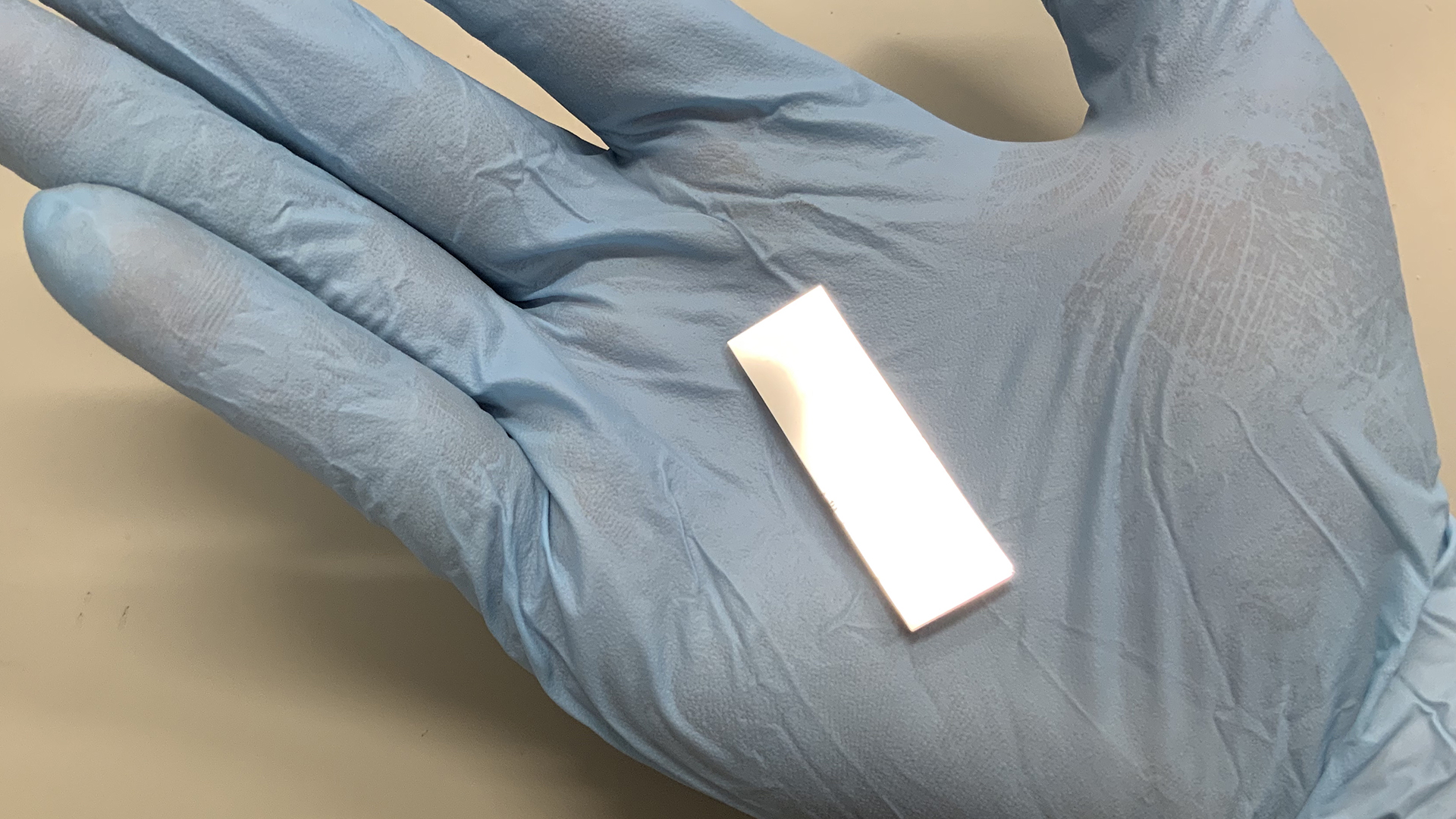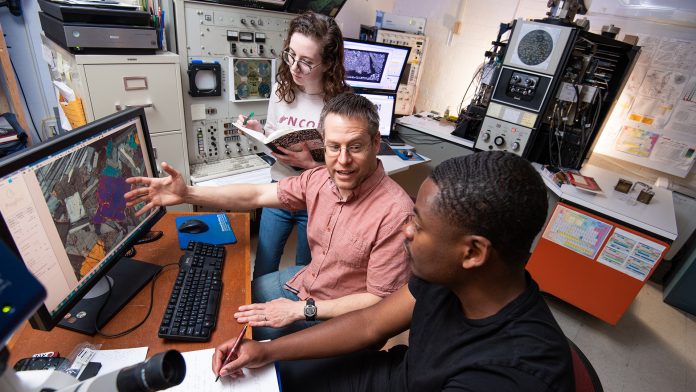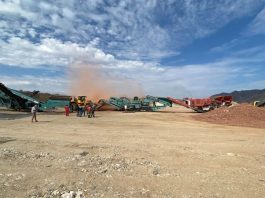The Analysis Center is developing innovative new materials-characterisation technology and expanding the suite of analytical techniques available regionally to support REE resource exploration and workforce development.
Since 2022, the Concord Materials and Rare Earth Element Analysis Center has gone from concept to implementation, initiated with more than $800,000 in federal and state funding in the first two years and with additional funding pending. The project is managed by geoscience professors Dr Stephen Kuehn and Dr Joseph Allen and by chemistry professor Dr Rodney Tigaa. The team brings together expertise in regional geology, materials characterisation, and development of REE-based technologies.
Extracting rare earth elements from coalfields
Rare earth elements (REEs) are widely used in numerous high-technology applications and are subject to growing demand. National and industry interests also seek to diversify REE supply chains.
One source of great interest is the extraction of REEs from coal and from the byproducts of coal mining and use, including waste rock, coal ash, acid mine drainage, and treatment residues. The coalfields of the Appalachian region in the eastern US are a key target of exploration for REE resource development.
These potential resources are centred around the states of Kentucky and West Virginia, along with several bordering states, and the central portion historically had the highest levels of coal production.
In 2017, a U.S. Department of Energy report outlined three major requirements for the economic development of REEs from coalfields:
- Location and identification of sources with the highest REE concentrations,
- Characterisation of where and in what forms those REEs are present to inform extraction techniques, and
- Development of improved technologies to recover and concentrate REEs from the raw source materials.
Meeting these goals depends in part on effective, reliable, and routine analytical methods to quantify the spatial distributions and REE abundances in large volumes of natural and produced materials, including both solids and liquids. Optical, X-ray, and mass-spectrometry, along with electron microscopy, are among the most commonly used techniques for this testing. As the potential resources are spread across large geographic areas of coal fields, scaling up pilot efforts to wide-scale, systematic exploration and development will be analytically intensive.
The Analysis Center: Providing infrastructure and expertise
The Concord Materials and Rare Earth Element Analysis Center is ideally located to help meet the increasing need for materials characterisation. The Center is located in southern West Virginia, close to Appalachian metallurgical coal fields, meaning that samples could be collected from mine sites and then delivered to the lab on the same day.
The Center also builds on existing facilities and available expertise. Concord University has been on a path to expand instrumentation in support of education, research, and economic development for two decades. Major goals of the new Center include advancing the capabilities of microanalytical instrumentation through new hardware and software innovations, expanding the availability of additional analytical tools and techniques, supporting natural resource exploration and development, and building the next-generation workforce.

By establishing core infrastructure, the Center will further enhance economic development by attracting and supporting new research enterprises and facilitating the development of regional REE natural resources.
Since 2010, Concord University has operated the only electron probe microanalysis (EPMA) laboratory in West Virginia, which serves as a cornerstone of the multi-instrument Analysis Center. An EPMA is a specialised type of scanning electron microscope capable of imaging and high-precision X-ray spectroscopy at target dimensions as small as 1/1000th of a millimetre.
Developing technologies
As part of the Center’s goal of advancing analytical instrumentation, a series of EPMA hardware and software innovations are planned and under development for 2024-2026. In February this year, the Center accepted delivery of one of the first of these innovations, a high-performance X-ray-diffracting crystal manufactured from pure Germanium.
The new Ge diffracting crystal enhances X-ray spectroscopy capabilities by providing greater signal intensity, better separation of closely-spaced REE X-ray spectral lines, and suppression of spectral interferences. This results in improved element specificity and lower limits of detection, both of which are needed to quantify REE concentrations in coalfield materials. The Ge crystal was manufactured by Rigaku Innovative Technologies of Auburn Hills, Michigan and installed by Advanced Microbeam Inc. of Vienna, Ohio. This is the first end-client installation of this new hardware.
Detailed testing, qualification, and method development are underway and will be summarised in a presentation, ‘Improved EPMA Analysis of Rare Earth and Trace Elements Using a New Precision Germanium WDS Crystal,’ scheduled for delivery at the Microscopy and Microanalysis 2024 conference in Cleveland, Ohio in late July.
A collaborative, comprehensive learning environment
Concord University students and faculty, visiting researchers, and industry users can utilise existing Concord Materials and Rare Earth Element Analysis Center capabilities now. They will be able to take advantage of additional capabilities as they come online incrementally.
We welcome collaborations to demonstrate commercial applications of the new analytical capabilities and hope to bring some of the prototype hardware-software advancements to market in co-operation with key partners.
Since Concord University is also a teaching institution, the analytical instruments are frequently used for university coursework in geology, chemistry, and physics, as well as for collaborative student, faculty, and industry research projects. This provides students with first-hand experiences with major analytical instrumentation, basic materials research, and development, which build in-demand skills for direct entry to the workforce or advanced graduate-level study.
Please note, this article will also appear in the 18th edition of our quarterly publication.









